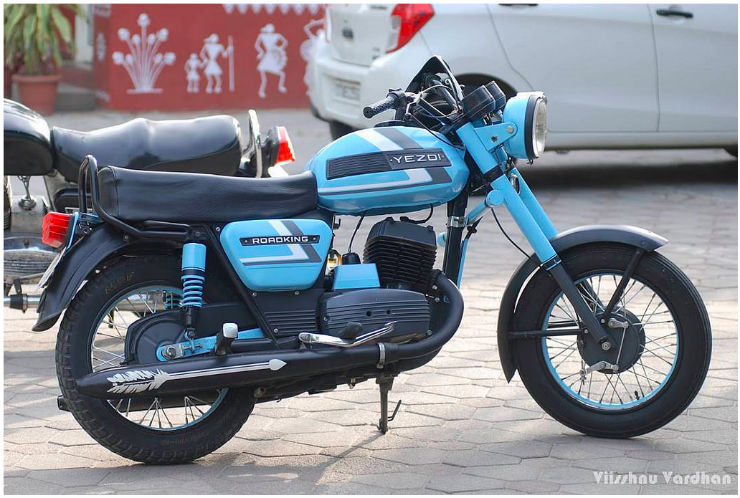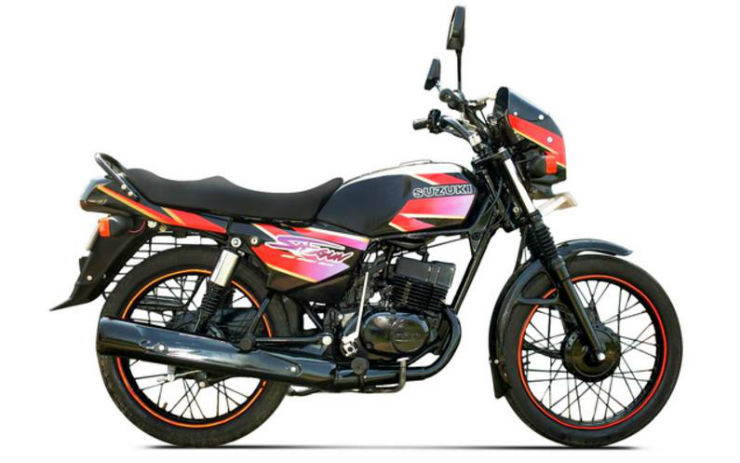Why two-stroke engines were fun but had to be killed
It has been decades since the last motorcycle with a 2-stroke engine was produced. Karl Benz patented the 2-stroke engine in 1879 in Germany. He worked on this engine because he observed that three cycles of a 4-stroke engine were wasted because there was only one combustion stroke. Many people enjoyed the sound and driving a motorcycle with a 2-stroke engine because of its unique characteristics—it was more noisy [in a good way] and had more power [for the same displacement]. So, if they were so good, why they had to be killed. For that, we need to know some things about the two-stroke engine like its working, advantages, and disadvantages.
Difference between the working of 2-stroke engine and 4-stroke engine
Also read: Triple riders escape from cops & mock at them: Caught & fined Rs. 14,500!
The biggest difference between both engines is the number of strokes or cycles the piston requires to produce power from the air and fuel mixture.
As the name suggests the 2-stroke engine requires 2-strokes or cycle of the piston to complete the combustion and the exhaust cycle. The combustion chamber is located on the upper side of the piston whereas on the other side of the piston is the crankcase. The piston draws air and fuel into the crankcase while it’s pressuring air and fuel into the chamber and forcing up air and fuel to the chamber when it’s being driven down by the combustion. When the piston goes up towards its combustion stroke it creates a vacuum in the crankcase which is also acting as an air chamber because of which air and fuel are sucked through the carburetor.
When the combustion strokes start the crankcase is pressurized and the air and fuel mixture are forced into the combustion chamber. When the air and fuel mixture is rushed into the combustion chamber they force the exhaust gases to exit the chamber. Then, the mixture is compressed and ignited and the whole process starts again. In the 2-stroke engine, valves are not used because of the piston’s side cover and uncover the intakes and the chamber. So, there are two-strokes out of which one produces the power.
The 4-stroke engine completes the combustion and the exhaust cycle in 4 strokes of the piston. Hence, the name 4-stroke engine. The piston moves down and the intake valve opens to let in the mixture of air and fuel into the cylinder. This is known as the intake stroke. When the piston moves back up, the mixture is compressed and it is known as the compression stroke. This is the moment when the spark plug sparks the mixture and it causes an explosion that pushes the piston back down. This is known as the combustion stroke. Now, the exhaust valves open and the piston moves back up to force the exhaust gases to move towards the exhaust valves and towards the tailpipes. This is known as the exhaust stroke. So, there is a total of 4 strokes and only one of them is the combustion stroke which is producing power.
The two-stroke engines were immensely fun and many legendary motorcycles were sold in India that stole hearts of automotive enthusiasts. Some such examples are Yamaha RX100, Yamaha RD350, Yezdi Roadking 250 and there were many more. You can check our more such bikes and read about them by clicking here. To understand what all made the two-stroke engines fun, first, we need to know its advantages:-
Consistent power
In 2-stroke engines, the power stroke does not have to carry as far as it does in a 4-stroke engine. Remember there are 4 strokes in a 4-stroke engine and only 1 power stroke so there are three more strokes before the power stroke can again kick in. Due to this 2-stroke engine have a more consistent and linear power delivery than the 4-stroke engine. There are twice as many power strokes in a single stroke engine when compared to a 4-stroke engine.
Quick acceleration and distinctive sound
The two-stroke engines are quicker to accelerate because they can complete their combustion cycle in almost half the time when compared to a four-stroke engine. Also, they produce a much louder and sharper sound than the four-stroke engine whose sound is suppressed. Any 90’s kid would be able to differentiate between the sound of the two-stroke engine because of the Yamaha RX100 which was a two-stroke.
Lightweight and power to weight ratio
The two-stroke engines are lighter than the four-stroke engines because they contain less mechanical parts and sometimes even fewer cylinders which drops down the weight even further. One more advantage is that it has more power to weight ratio because they produce more power and have less weight
Less cost and less complicated
Because two-stroke engines have fewer parts involved in it, they are cheaper than the four-stroke engines and also cheaper to manufacture. This also leads them to be less complicated because of fewer mechanical parts in it. They are also simpler to manufacture which is important if the workers have to assemble them in a factory because it will require less skill. All of this helps the manufacturer to keep the costs in check.
Less prone to overheating
Out of the four cycles of a four-stroke engine, three cycles involve procedures that increase the temperature of the engine. Compression leads to heating, Combustion, as we know, increases temperature and exhaust stroke is just forcing hot exhaust gases from the cylinder. Whereas, the two-stroke engine each new charge cools off the chamber because fresh air and fuel are injected and the top of the cylinder is also exposed to air to prevent the temperature of the combustion chamber from rising. You must have seen the metal ridges on a motorcycle’s engine. Its purpose is to dissipate the heat away from the engine.
It was the consistent power delivery, quick acceleration, lightweight of the engine, and the screaming soundtrack that made the two-stroke engines so enjoyable and fun. So what happened that all of them had to go. Well, for that we need to understand the disadvantages that came with a two-stroke engine.
Short life-span
The two-stroke engines are not lubricated as efficiently as a four-stroke engine which affects the life and wears and tear of the engine directly. Because of the lack of proper lubrication, there can be friction between the moving parts of the engine causing them to wear out faster. The two-stroke engine relies on a mix of oil with fuel to lubricate the mechanical parts of the engine.
Expensive two-stroke oil
While the construction of the engine might be cheap but the oil that is required by the two-stroke engine for lubrication is more expensive. You require around 115 grams of oil for every 3.78 liters of fuel. This means that the engine would burn about 3.78 liters of oil every 1500 kilometers. And remember that this oil is expensive and you would need to top-up it quite frequently or your engine will lose lubrication and that will lead to engine failure.
Less mileage
Two-stroke engines are not quite efficient in combustion because of which they have less mileage. The incomplete combustion is one of the reasons they produce less mileage and because of the other stroke that occurs that unburnt fuel is also passed out to the exhaust increasing the inefficiency even more.
Pollution
Pollution was the biggest and the most prominent problem of the two-stroke engines. As we discussed that the two-stroke engines relied on oil for lubrication, this leads to oil burning. With every power stroke, oil was also burnt with the fuel and air mixture. This is the reason that you see big white and thick smoke from the exhausts of a two-stroke engine. Also, the unburnt oil and fuel mixture that was released through the exhausts and is very harmful to our environment.
The manufacturers were not able to control the pollution levels that were emitted from the two-stroke engine and because of which they couldn’t comply with the new emission standards that were set by most of the countries. Because of this, the two-stroke engine had to be killed. People still love the oomph that the two-stroke engines offered but it was inevitable for the two-stroke engines to survive even stricter emission norms that are set to protect the environment and the air that we breathe.
Also read: Royal Enfield factory visit on video




No comments
please do not enter any spam link in the comment box